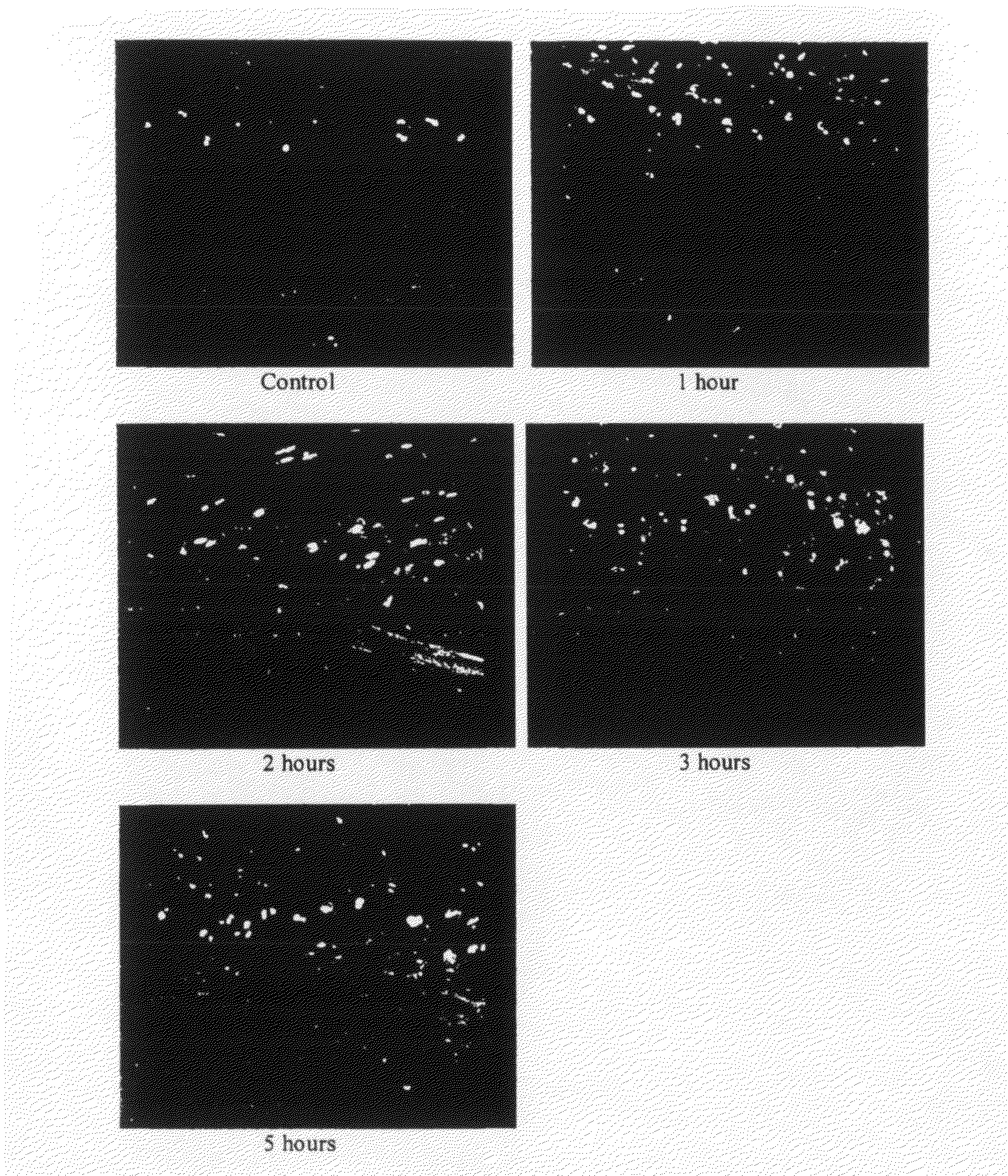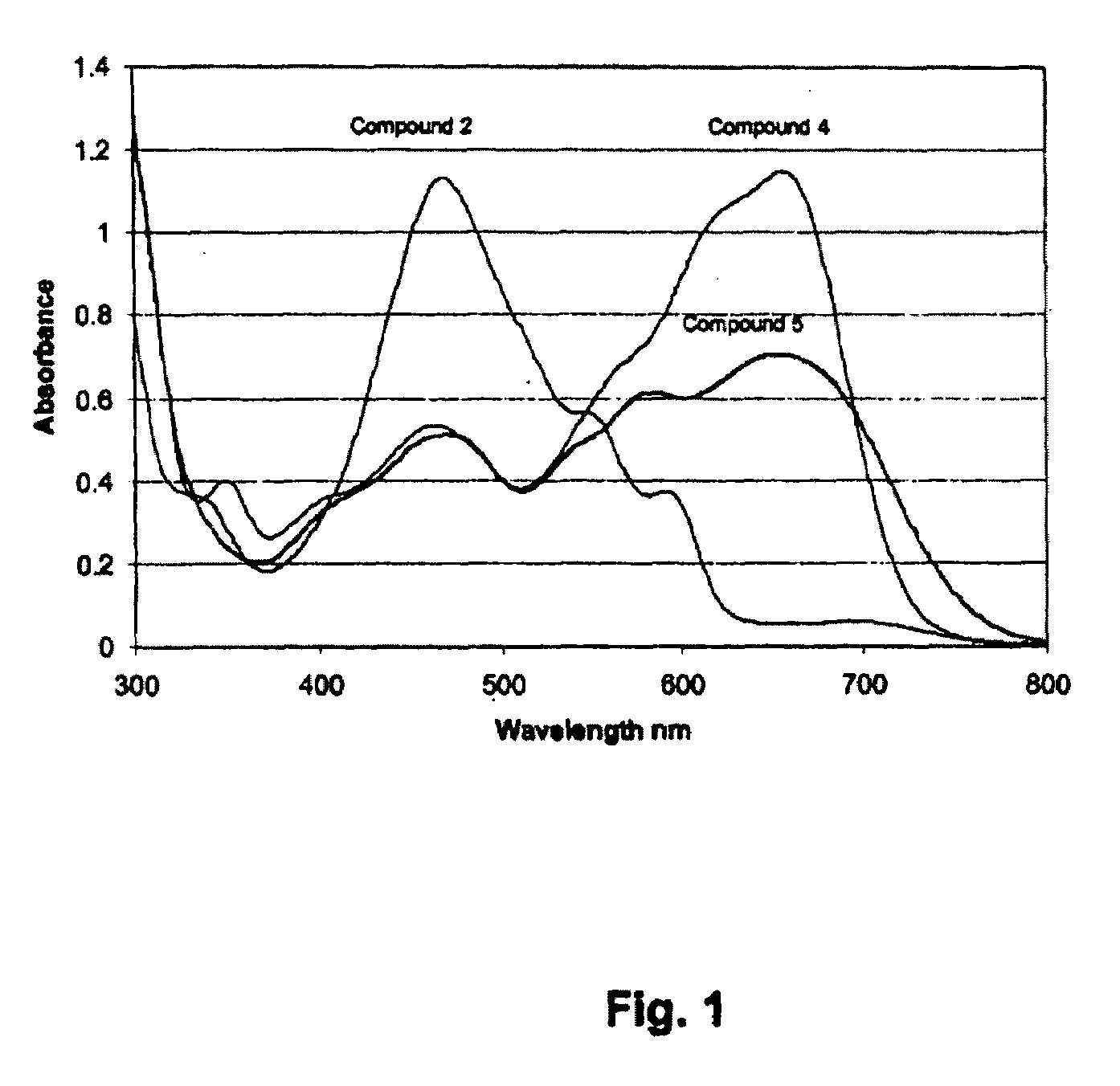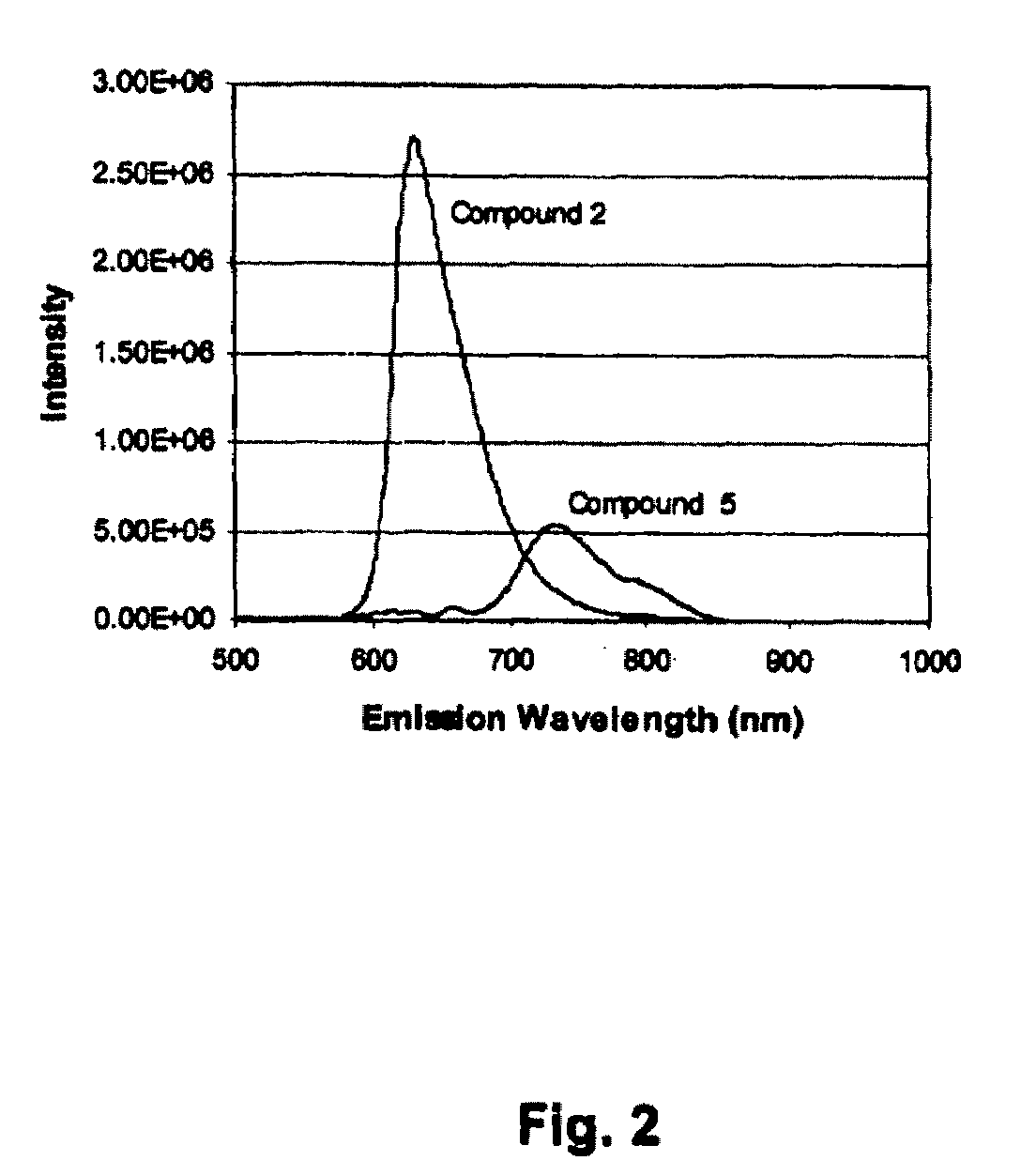Perylenequinone derivatives and uses thereof
a technology of perylenequinone and derivatives, applied in the field of medicinal chemistry, can solve the problem of limiting the application of pdt, and achieve the effects of enhancing photodynamic activity, enhancing photoresponse, and improving photodynamic activity
- Summary
- Abstract
- Description
- Claims
- Application Information
AI Technical Summary
Benefits of technology
Problems solved by technology
Method used
Image
Examples
example 1
Absorption and Fluorescence Spectra of Compounds (4) and (5)
[0175]The absorption spectra of compounds (4) and (5) recorded in DMSO are shown in FIG. 1 along with the parent compound (2). Based on the study of absorption spectra of hypocrellin B (2) (Diwu et al. Sinica Sci. B 18, 1993, 131), the shorter wavelength absorption bands are assigned to the π-π* transition, and the absorption bands at the longer wavelength is the relation to intermolecular charge transfer (ICT) which may take on some active role in the photodynamic activity of the molecule. From FIG. 1, the absorption at the longer wavelengths of compounds (4) and (5) has enhanced, as compared to the parent hypocrellin B (2). The maximum absorption of compounds (4) and (5) is around 600 -700 nm in DMSO which helps in tissue penetration, while the parent compound hypocrellin (2) has maximum absorption at 580 nm in DMSO. When an electron donating group like 3-dimethylaminopropylamine is introduced in the quinonoid molecule, i...
example 2
Evidence for Generation of Singlet Oxygen
[0177]Reactive oxygen spices generated can be measured using various optical assays and EPR method.
[0178]Optical assay (Mothilal K. et al. J Photochem. Photobiol. Chem., 262, 2004, 9-16.)
[0179]Optical assay for singlet oxygen was performed using RNO bleaching method (Mothilal K. et al. J Photochem. Photobiol. Chem., 262, 2004, 9-16). The drug (1 mM) was irradiated in the presence of imidazole (10 mM) and RNO (50 mM) in phosphate buffer (pH 7.4), bleaching of RNO by singlet oxygen was followed spectrophotometrically at 440 nm. The interference of super oxide and hydrogen peroxide on RNO bleaching was removed by the addition of super oxide dismutase (SOD) and catalase, respectively. Bleaching of RNO as a function of time by compound is shown in FIG. 3.
[0180]EPR Spin Trapping Assay (Rajamanicakam, et al. Biochim. Biophys. Acta 1622 (2), 2003, 65-72.)
[0181]Due to the broad absorption of the compound in the visible region we use optical method for...
example 3
Evidence for Generation of Super Oxide Anion
[0184]Optical Assay
[0185]SOD inhibitable cytochrome c reduction method was used for super oxide detection. The drug (compound (4)) (1 mM) was illuminated in the presence of cytochrome c (40 μM) in 50 mM phosphate buffer (pH 7.4). The reaction was followed by observing the increase in 550 nm absorption peak of cytochrome c as a function of time (FIG. 6).
[0186]EPR Spin Trapping.
[0187]Photo generation of superoxide anion by drug was verified by EPR spin trapping technique. Solution of compound (4) (1 mM) and 5,5-dimethyl-1-pyrroline-N-oxide (DMPO) (100 mM) in DMSO were irradiated and a 12-line EPR spectrum characteristic of DMPO-super oxide adduct was obtained confirming the generation of super oxide (see FIG. 7). (A) represents the in the dark and (B) after 4-minute irradiation. The spectrometer settings were the following: microwave power, 2 mW; modulation frequency, 100 kHz; modulation amplitude, 0.5;time constant, 0.1 s; scan rate, 4 minu...
PUM
| Property | Measurement | Unit |
|---|---|---|
| temperature | aaaaa | aaaaa |
| temperature | aaaaa | aaaaa |
| wavelength | aaaaa | aaaaa |
Abstract
Description
Claims
Application Information
 Login to View More
Login to View More - R&D
- Intellectual Property
- Life Sciences
- Materials
- Tech Scout
- Unparalleled Data Quality
- Higher Quality Content
- 60% Fewer Hallucinations
Browse by: Latest US Patents, China's latest patents, Technical Efficacy Thesaurus, Application Domain, Technology Topic, Popular Technical Reports.
© 2025 PatSnap. All rights reserved.Legal|Privacy policy|Modern Slavery Act Transparency Statement|Sitemap|About US| Contact US: help@patsnap.com



